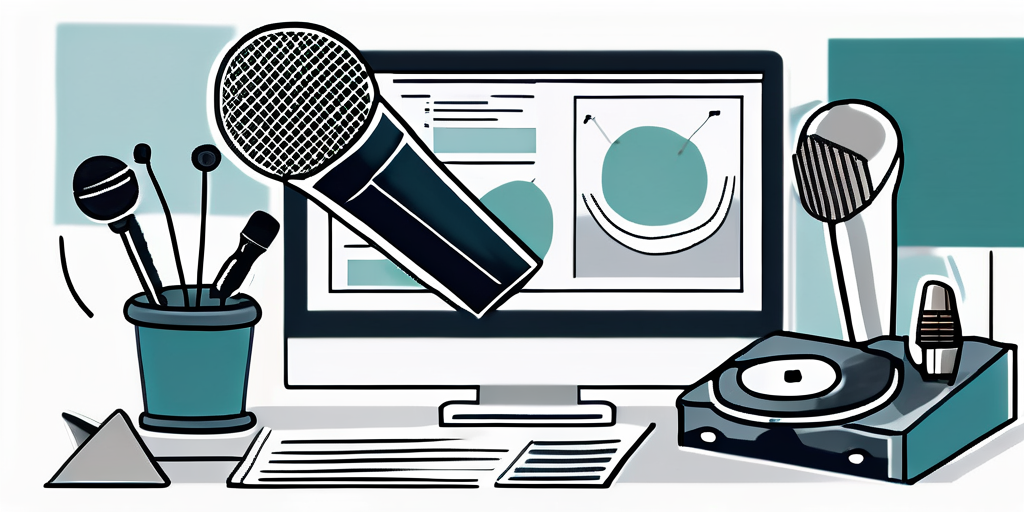
A media kit, also known as a press kit, is an essential tool in public relations. It is a pre-packaged set of promotional materials that provide information about a person, company, organization or cause and which is distributed to members of the media for promotional use. Media kits are often distributed to announce a release or for a news conference.
They are often used as a company’s first line of communication with journalists and other media outlets. A well-crafted media kit can be a valuable tool for getting the word out about your business, product, or event. This glossary article will delve into the intricacies of a media kit, its components, and its role in public relations.
Understanding Media Kits
A media kit is a comprehensive package of information that provides journalists and other media professionals with detailed information about a product, company, event or issue. The purpose of a media kit is to provide this information in a format that is easy to use and understand, and that provides a clear and concise overview of the subject matter.
Media kits can be distributed in a variety of ways, including through mail, email, or downloadable from a company’s website. They are often used in conjunction with press releases, which are also a key component of public relations. The goal of a media kit is to attract the attention of journalists and encourage them to cover your story, product, or event.
Components of a Media Kit
A media kit typically includes a variety of materials that provide detailed information about the subject matter. This can include a company profile, fact sheets, press releases, news articles, case studies, testimonials, photographs, and other relevant materials. The specific components of a media kit can vary depending on the nature of the subject matter and the target audience.
For example, a media kit for a new product launch might include a press release announcing the product, a fact sheet detailing the product’s features and benefits, high-resolution product photos, and testimonials from customers or industry experts. On the other hand, a media kit for a nonprofit organization might include a company profile, fact sheets about the organization’s mission and impact, news articles about the organization’s work, and photographs of the organization’s projects or events.
Importance of a Media Kit
A media kit is an important tool in public relations because it provides journalists and other media professionals with the information they need to cover your story, product, or event. By providing this information in a clear and concise format, a media kit can help to ensure that your message is accurately and effectively communicated to the public.
Furthermore, a well-crafted media kit can help to establish your company or organization as a credible and reliable source of information. This can help to build trust and credibility with the media, which can in turn lead to more positive media coverage and a stronger public image.
Creating a Media Kit
Creating a media kit requires careful planning and attention to detail. The first step in creating a media kit is to determine the purpose of the kit and the target audience. This will help to guide the selection of materials to include in the kit and the format in which the kit will be distributed.
Once the purpose and audience have been determined, the next step is to gather the necessary materials. This can include writing press releases and fact sheets, collecting news articles and testimonials, and obtaining high-resolution photographs. It’s important to ensure that all materials are up-to-date, accurate, and professionally presented.
Design and Layout
The design and layout of a media kit should be professional and easy to navigate. This can include using a consistent color scheme and font, including a table of contents, and organizing materials in a logical order. The design should also reflect the brand identity of the company or organization, including the use of logos and other branding elements.
It’s also important to consider the format in which the media kit will be distributed. For example, if the kit will be emailed, it may be best to include the materials as separate attachments or to provide a link to a downloadable version of the kit on your company’s website. If the kit will be mailed, it may be best to print the materials on high-quality paper and to package them in a professional-looking folder or binder.
Updating a Media Kit
Once a media kit has been created, it’s important to keep it updated. This can include adding new press releases or news articles, updating fact sheets and company profiles, and replacing outdated photographs. Keeping a media kit updated ensures that journalists and other media professionals have access to the most current and accurate information.
It’s also a good idea to periodically review the effectiveness of your media kit. This can include tracking the number of media inquiries or coverage that result from the kit, as well as seeking feedback from journalists and other media professionals. This can help to identify areas for improvement and to ensure that your media kit continues to meet the needs of your target audience.
Conclusion
In conclusion, a media kit is a vital tool in public relations that provides journalists and other media professionals with detailed information about a product, company, event or issue. A well-crafted media kit can attract the attention of journalists, ensure accurate and effective communication of your message, and build trust and credibility with the media.
Creating a media kit requires careful planning and attention to detail, including determining the purpose and audience, gathering the necessary materials, designing a professional and easy-to-navigate layout, and keeping the kit updated. With a well-crafted media kit, you can enhance your public relations efforts and achieve your communication goals.




